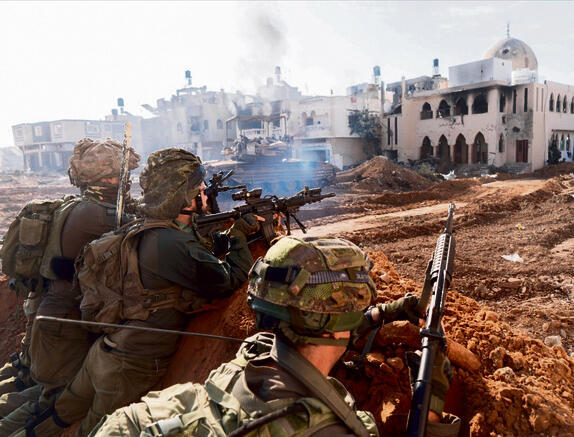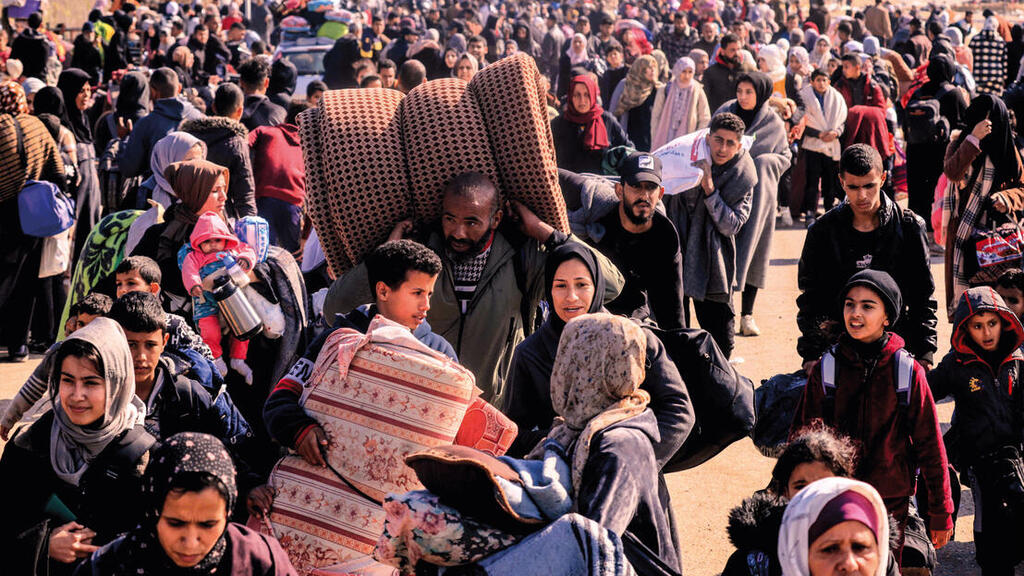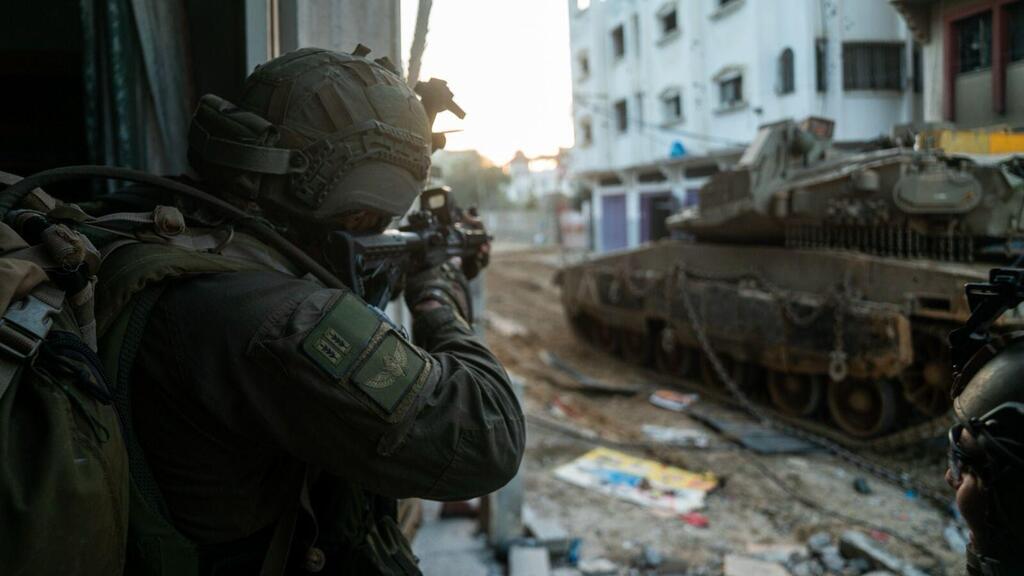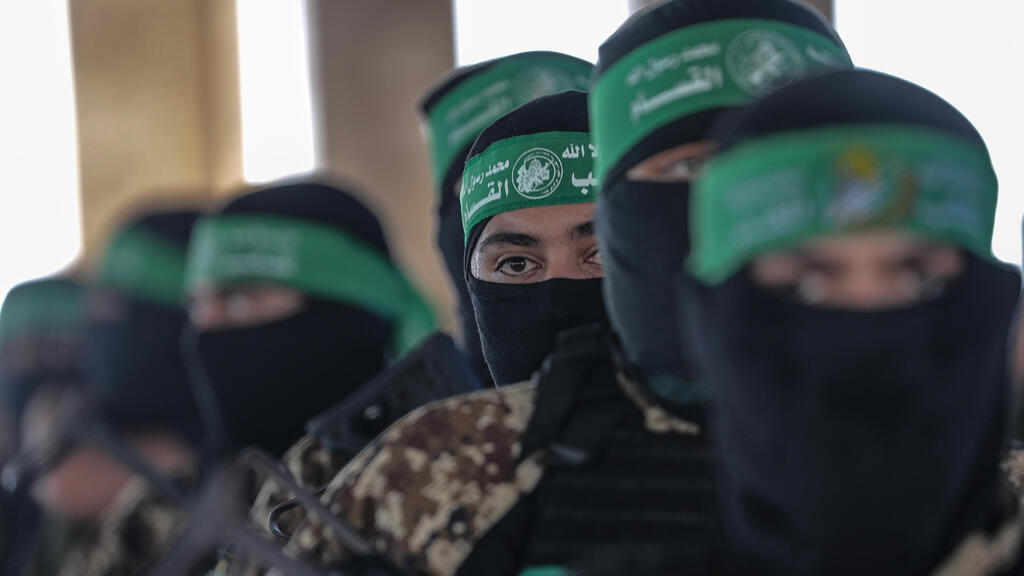Getting your Trinity Audio player ready...
The IDF's ground operation in Khan Younis is becoming more extensive than in the northern part of the Strip with Hamas fighters less willing to hide or flee.
More stories:
More than 400 terrorists were killed in western Khan Younis in less than a week of fighting around the city's al-Muazi refugee camp west of the city, which is surrounded from three flanks.
The fighting in the refugee camp is led by elite IDF commando units given the dense urban nature of the area. Between the refugee camp and the nearby town of Al-Mawasi, lies the largest hospital in the Strip, Nasser Hospital, which the forces are nearing.
The IDF’s tactical achievements are accumulating. Last week, soldiers located a massive warehouse containing anti-tank explosives and a cache of pest-control chemicals suspected to be for military use. “The ring around Khan Younis’ refugee camp is tightening, with Hamas terrorists coming out and fighting, some wearing UNRWA volunteer vests,” IDF commanders in the region said.
For the soldiers, this represents an opportunity to kill many terrorists quickly. However, seeing Hamas's early preparation for the IDF's incursion in the area, evident in the numerous explosive devices and ambushes, the military estimates Khan Younis is a significant location for Hamas.
Forces are attempting to locate information that would bring them closer to the hostages and high-ranking Hamas members, as well as intelligence that would lead help to identify new targets and strategies in the war.
It should be noted that further operations in Rafah or the Philadelphi Corridor, require two challenging prerequisites: the evacuation of over a million Gazans in Rafah and its surroundings and Egyptian consent, needing some political consideration for the Palestinians.
Israeli officials strongly oppose this, making it challenging to envision any Israeli action in the area without approval from the Egyptian military. The harsh Egyptian statements against Israel over the weekend do not indicate that such a coordination would take place. However, discussions with Cairo on the subject are still ongoing.
Equally interesting developments are taking place outside of the camp’s western side. There, troops established a checkpoint similar to the two set up at the beginning of the operation and still active in the northern part of the Strip. From this checkpoint, approximately 20,000 Palestinians exited toward the town of Al-Mawasi in recent days.
This is a great achievement for the IDF, seeing as several hundred thousand Palestinians remain in Khan Younis, making the fighting much more challenging. Of the thousands of Gazans who passed through the area, at least 70 suspects were detained for interrogation by the Shin Bet and local forces.
Dozens of IDF officers have been attached to combat teams to deal with the significant civilian presence in Khan Younis. Soldiers assisted hundreds of uninvolved Palestinians stranded in the combat zone. Like in the northern areas, soldiers in the south have seen that Hamas leaves behind the old and feeble, alone, exhausted, and thirsty, to fend for themselves. Forces already transferred two old women to Israel after no one was prepared to care for them in Gaza.
Soldiers in Khan Younis are dealing with groups of displaced Palestinians trying to return to their homes in the northern part of the Strip, and are dispersed using riot gear. Similar cases are reported at the border crossings north of Khan Younis and south of Gaza City.
The overall goal of the IDF in Khan Younis is to locate and reach senior Hamas leaders while attempting to locate Israeli hostages. The missions in the northern part of the Strip were also crucial, but different: reaching critical Hamas infrastructure in the area, such as control and main command posts in Rimal’s Palestine Square, underground tunnels, and major outposts in Jabaliya and Shati refugee camps.
According to the IDF, Hamas’ battalions in the northern part of the Strip were decisively defeated. Many terrorists from these battalions were killed, but similar quantities escaped disguised as civilians or went into hiding.
In the limited scope of the operations in the central Gazan town of Bureij, the mission was similar: reaching Hamas’ military-industrial facilities, most of them underground, and destroying them.
The stormy weather in recent days has slowed operations in western Khan Younis. However, even a deal including a cease-fire following negotiations, should they take place, would not hinder the IDF’s efforts in Gaza. Many commanders in the field see a distinct operational advantage in a pause to fighting, assuming an agreement made by the government would include a renewal of fighting at some point.
They believe a prolonged lull would bring Hamas leaders out of their underground hideouts, give them an opportunity to make mistakes, and create targets for the military to pursue.







